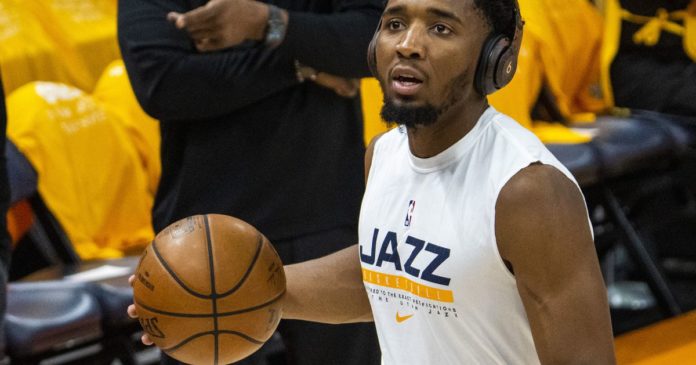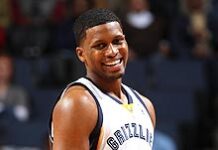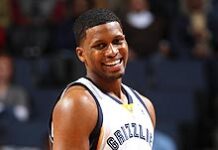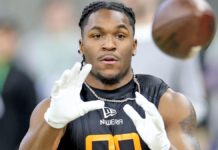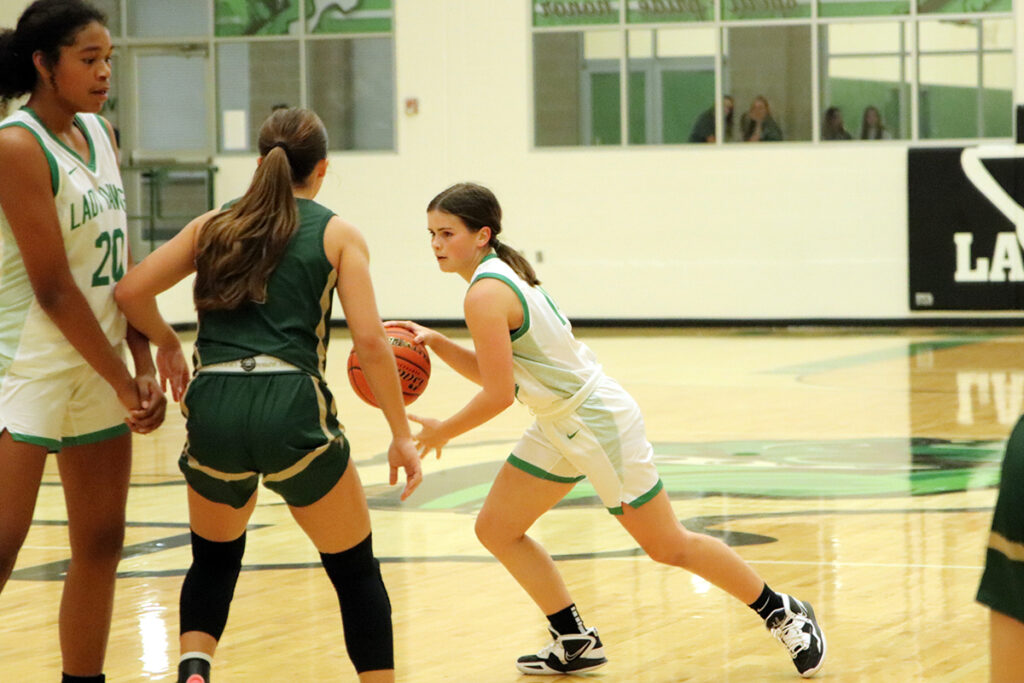
Editor’s note • This story is available to Salt Lake Tribune subscribers only. Thank you for supporting local journalism.
There’s no way around it: Last season, Utah Jazz skeptics were proved right.
Yes, the Jazz were dealing with the unfortunate injuries to Mike Conley and Donovan Mitchell that impacted the effectiveness and availability of Utah’s All-Star backcourt. And yet, it doesn’t really matter how valid the Jazz’s reasons (or excuses) are: The NBA is a results-oriented business, the only results that matter are the playoffs, and the Jazz failed to make it out of the second round after finishing with the league’s best regular-season record.
So how do the Jazz change it up this year? They’ll want to use the season as a proving ground for more successful playoff plans, to find which players, lineups, and schemes they can count on when chasing after 16 wins in May and June.
But what are the keys to playoff success they can demonstrate during the regular season? Here are seven burning questions that the Jazz will want to have figured out before they get fully tested again.
How do the Jazz defend the point of attack?
The Jazz got toasted last year in the playoffs. Toasted, roasted, and, in the end, composted.
The Jazz allowed the Clippers to score 130 points per 100 possessions in their second-round series, a wildly huge number that gave them no chance to keep up, even as All-NBA player Kawhi Leonard missed the series’ final two games with a torn ACL.
As ESPN’s Tim MacMahon said on Zach Lowe’s podcast: “People act like Gobert was the problem defensively against the Clippers. What are you talking about? The reason Terrance Mann lit it up is because, like you just mentioned, it was blow by, after blow by, after blow by.”
And it’s not like they played terrific defense against the No. 8 seed Grizzlies, either, allowing a team that scored 112 points per 100 possessions in the regular season to score 116 per 100 possessions in the usually-more-defensive playoffs.
To be sure, Mitchell’s injury played a big role; he clearly was unable to move laterally as well as he usually does. But even when Mitchell was healthy against the Nuggets in 2020, the Jazz’s point-of-attack defense wasn’t anywhere near good enough for them to advance in the playoffs.
The Jazz didn’t really upgrade their perimeter defense in terms of personnel this offseason — you could argue Rudy Gay is an upgrade over Georges Niang, but it’s hard to describe Gay as a big difference-maker against the likes of Jamal Murray and Reggie Jackson. So where does the improvement come from? It’ll have to be from individual improvement or scheme changes.
Regardless, it’s the top priority for the team in the regular season this year: figure out some way to defend, beyond wholesale relying on Rudy Gobert. They’ll be written off until they prove it in the playoffs, but even some growing pains while they make changes could be worth it in the end. See, for example, the 2020-21 Milwaukee Bucks, who struggled in the regular season before putting the whole package together for an NBA title.
What’s Quin Snyder big plan this year?
In each of his years as coach, Snyder hasn’t been happy with keeping the status quo. Sure, the broad strokes of his system have remained the same: a passing-oriented, strong-side to weak-side movement system with repeated drive-and-kicks which has affectionately been referred to as “the blender.”
But when he hasn’t had to worry about integrating major new players into the roster, he’s also tried to add to wrinkles into his system that have boosted its efficiency. In 2018, that was “the high pass,” in an effort to get Rudy Gobert more dunks. It worked. He got 306 of them that season. And in 2020, it was an emphasis on transition 3s, turning the Jazz into a high-octane offense that set the league ablaze last season.
The obvious question: What’s the plan this year? We’ll likely learn in the first few days of training camp, as Snyder looks to re-establish the team’s habits, then add in the new wrinkles.
Can Jazz play small ball at times?
Obviously, the Jazz didn’t have a compelling answer to the Clippers’ small-ball lineup in the playoffs — just as they hadn’t to some of the Rockets’ small-ball lineups in years past.
But this year, they’ve added a couple of other, more flexible pieces. First on the list is former San Antonio man Gay, who played 9% of his minutes as the center for the Spurs last year. Gay, standing at 6-foot-8 and weighing 250 pounds, has always been a wing throughout his career, but is just long enough and just competitive enough inside to grab contested rebounds and maybe change a shot every once in a while. Meanwhile, defensively, he’s stout enough on the perimeter to handle most matchups.
At 35 years old now, will Gay’s quickness last? And will Snyder’s system work with a smaller player screening? The Jazz struggled when putting Jeff Green at center two years ago — was that due to Green’s quirks, or a fundamental necessity of the Jazz’s center to screen and roll effectively?
New trade acquisition Eric Paschall presents a plausible middle ground. He’s just 6-6, but plays more like a big man, hanging more around the basket on both ends. But he’s also not a terrific rebounder, and while he has a versatile offensive game, it hasn’t really coalesced into must-play territory. He played fully 65% of his minutes at center for the Warriors last year — the question is less about fit, and more about whether or not Paschall is talented enough overall to earn minutes in the playoffs.
Is Jared Butler ready to play minutes?
Jared Butler is, in my opinion, the most intriguing Jazz rookie since Donovan Mitchell.
Now, that’s a relatively low bar: Udoka Azubuike, Grayson Allen, and the Jazz’s motley crew of 2019 second-round picks are the competition. Butler is different, though: championship pedigree, a terrific jump shot, defensive bona fides, and room to improve. But point guard is an incredibly difficult position in the NBA; there aren’t many who excel at it right away. Those who do tend to be lottery picks.
The Jazz could use a rotation-caliber point guard to sop up minutes at the position. Mike Conley is aging, and doesn’t figure to play all 82 games or, if we’re honest, get especially close. And when he’s out, asking Donovan Mitchell or Jordan Clarkson to be a full-time point guard stretches their score-first instincts. Trent Forrest was the answer last year, but his limitations forced the Jazz to play Joe Ingles at the position most of all — which may have served to tire Ingles before the postseason.
It’s not exactly clear how Butler figures to help the team in the playoffs in year one. But maybe he can do so indirectly, making sure Conley, Mitchell, Clarkson, and Ingles are at their best by the time the playoffs arrive.
How much will aging change this team?
Father Time is undefeated. But he’s also a mysterious actor. No one really knows when aging will take its inevitable effects on a player’s career. Some can last until 40, but some are forced out of the league in their early 30s.
And the Jazz certainly have their fair share of players in their early 30s. Gay is 35. Ingles and Conley turn 34 in October. Bojan Bogdanovic is 32, as is Hassan Whiteside.
The result? Risk of downturns in some of the most important positions on the roster. Take a look at FiveThirtyEight’s projections, which compare the Jazz’s players to historical counterparts with similar stats and measurables at the same age.
Now, it’s worth noting that they were projected to decline last year, too. But Conley and Ingles put together one of the best seasons of their careers, Gay improved, and Bogdanovic only slightly fell off from where he was the year before. As Mark Twain famously (but didn’t actually) said: The reports of their deaths were greatly exaggerated.
What happens this year? We’ll see.
How aggressive will Justin Zanik be in his first year in charge?
Former Jazz general manager Dennis Lindsey had a local reputation of being relatively conservative in his moves, but I’m not sure it was completely fair. The man made a midseason trade in six of the eight years in charge, getting role players like Shelvin Mack, Jae Crowder, Kyle Korver, and Jordan Clarkson.
The problem is that only Crowder and Clarkson made much of an impact in the playoffs, and last year’s deadline acquisition, Matt Thomas, failed so spectacularly that he was waived this offseason. It proved to be a year where the Jazz could have really used an additional guard defender, but Lindsey went the other way.
How aggressive will new head man Justin Zanik prove to be in his first year without Lindsey above him? Undoubtedly, he feels pressure to put a true championship contender on the floor in Utah — but will that manifest itself in big win-now moves? Will the Jazz jeopardize future draft picks (which could well prove critical to either contention or a rebuild) to earn extra percentage-point chances at winning the title this year? We’re in uncharted territory.
Will Donovan Mitchell take yet another leap?
What Mitchell did in the playoffs was pretty incredible, all things considered.
Playing on an ankle injury that was plainly inhibiting his movement, Mitchell used 40% of the Jazz’s offensive possessions, putting up 34 points, five assists, and five rebounds per game against the Los Angeles Clippers. He made tough 3 after tough 3, found his way to the free-throw line, and generally dragged the Jazz offensively to pretty impressive heights throughout the series. They averaged 121 points per 100 possessions as a team during the playoffs — offense was definitely not the problem.
The question: Will he take yet another leap in the regular season this year?
He did last season, before that ankle injury cost him the final month of the 2020-21 regular season. He scored 26 points per game, averaged an additional assist per game, and generally played at a higher level than ever before — coming after a scintillating bubble playoff series against the Nuggets which featured two 50-point performances.
But Mitchell still isn’t really considered one of the league’s top 10 players, something which undoubtedly eats at him. Will he look to make yet another jump in 2021-22? If so, will he use even more of the Jazz’s pick and roll opportunities, for example? He already ranked fifth in the NBA in usage percentage last season, but could he jump even more?
Or will he go the other direction, sacrificing role and looking to make more of an impact on the defensive end? It’s something he’s vowed to do before, but Mitchell’s defensive effort has been inconsistently applied during his career. Can he be the true two-way guard he was drafted to be? Mitchell’s potential is endless, but there’s still room for him to choose his own adventure in the NBA.

